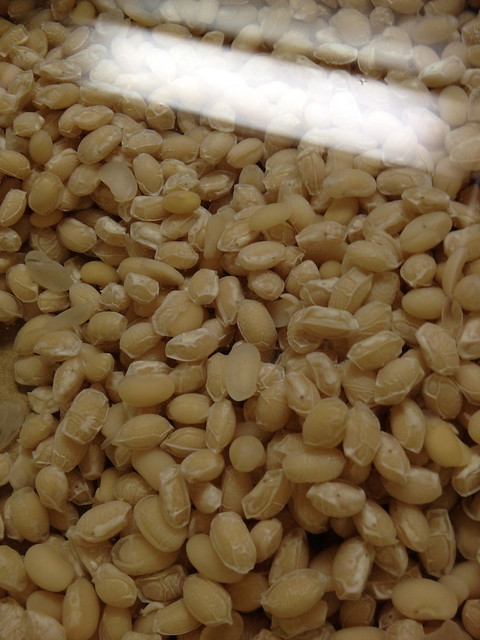
My most recent obsession is making
anko (sweet bean paste) from scratch. As I wrote in my
strawberry daifuku post a couple of weeks ago, using bean paste as dessert doesn't really exist in the west. But I am trying to find ways to mix this into my future baking. After all, it's gluten-free, and with all the gluten-free dessert shops popping up in the city, I want to find a brand new way of incorporating
anko.
The other reason I am so obsessed with making
wagashi (Japanese traditional sweets) is because I am organizing a program on the very subject matter, this
Wednesday at Japan Society (NYC). More on that later.
So, the ingredients for
anko is pretty simple.
For beans, I used northern white beans, since chef Nishihara from
Kajitsu shojin restaurant (NYC) told me that after numerous kinds of beans he used to make his dessert courses, he found northern white is as close as the ones available in Japan.
Use about half a pound of white beans, wash and place the beans in a pot full of water.

Boil the beans, and add about half a teaspoon of baking soda. This makes it easier to separate the beans from the skin.
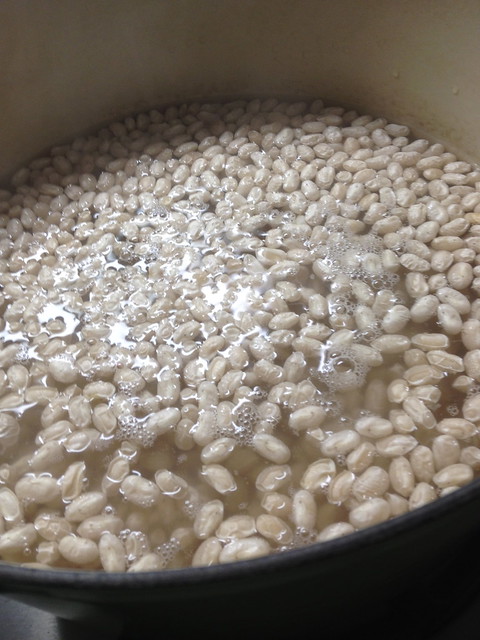
Here is the pot after I added baking soda.
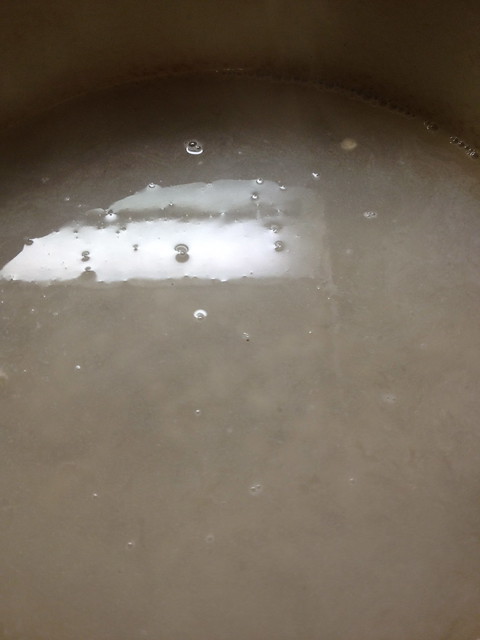
Put the beans in a bowl and wash -- using your palms, to scrub the beans to separate beans from skins. If you do this diligently, it will make your life easier later. You'll see I didn't do too well with this batch.
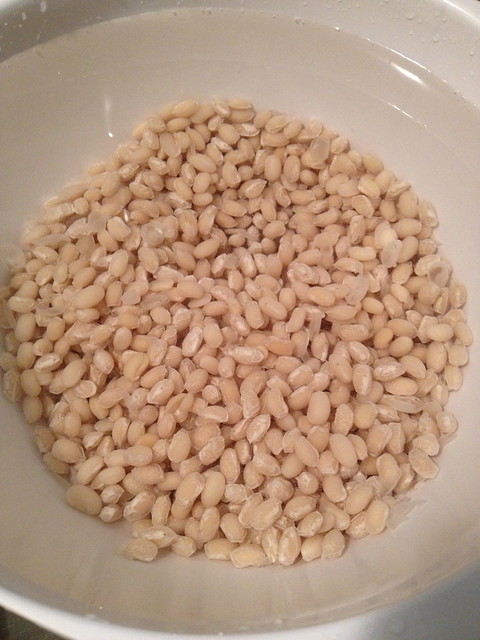
Bring the beans back to the pot, and cook them until they are super tender and can easily fall apart with your fingers.
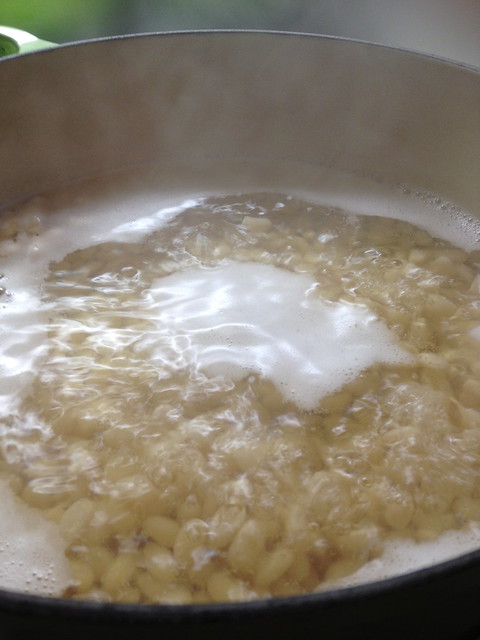
Sieve the beans through, into a bowl. This is pretty tedious but it is very important in order to make smooth bean paste.
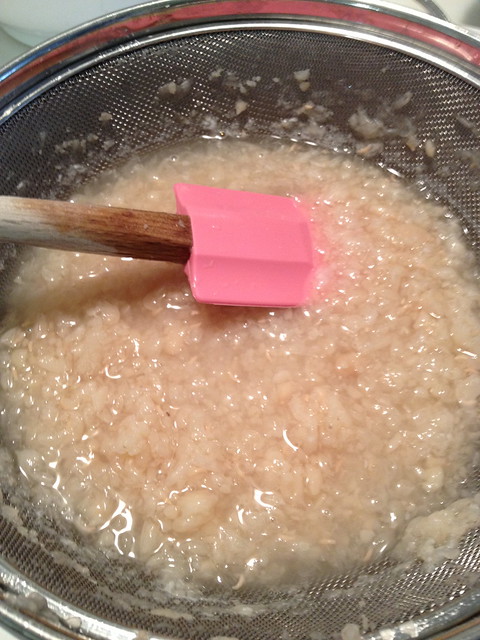
As I said, if you separated the skin earlier, you wouldn't get this much left at this point.
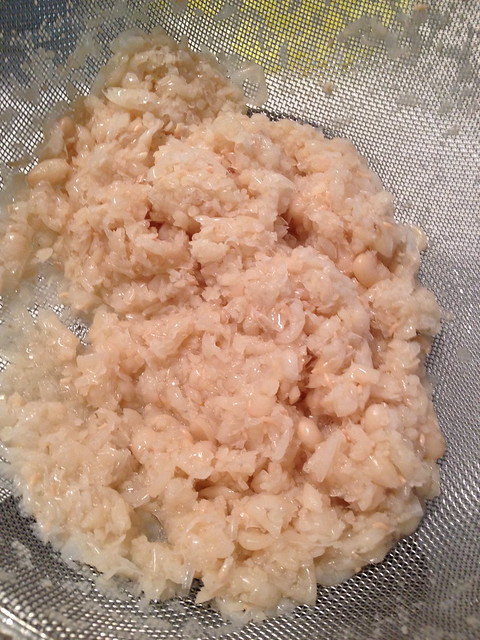
Now you have smooth bean paste in water. Use a cheesecloth and try to squeeze all the water.
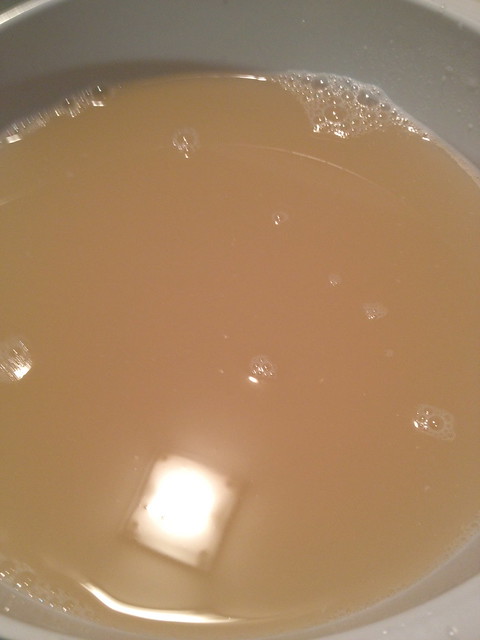
Once all the water is squeezed out, the bean paste will look like this:
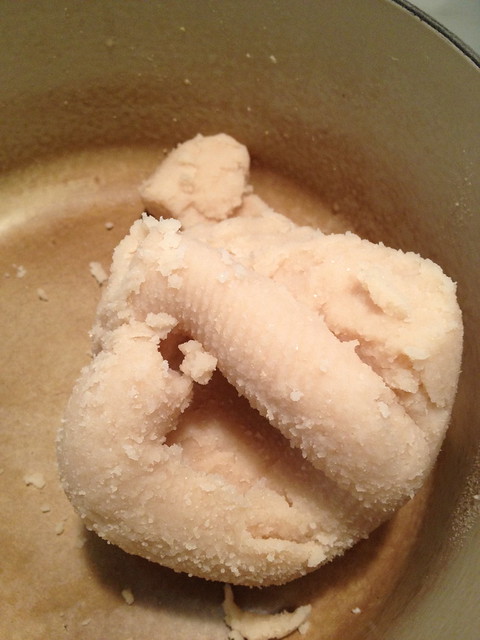
Now mix it with sugar (I used about 200 grams), and cook it all down until the mixture is VERY stiff.

You are looking for the consistency of miso. You must keep stirring the paste or else it will burn easily. Also be careful not to splash, as the mixture is extremely hot.
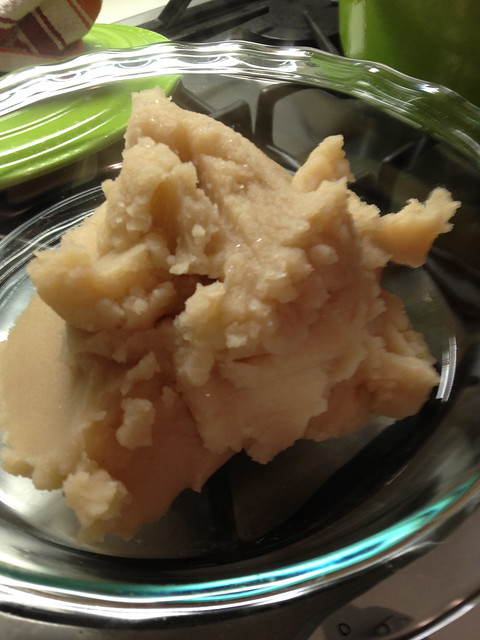
I tried to make manju (wrapped in dough, then baked), but they all exploded.
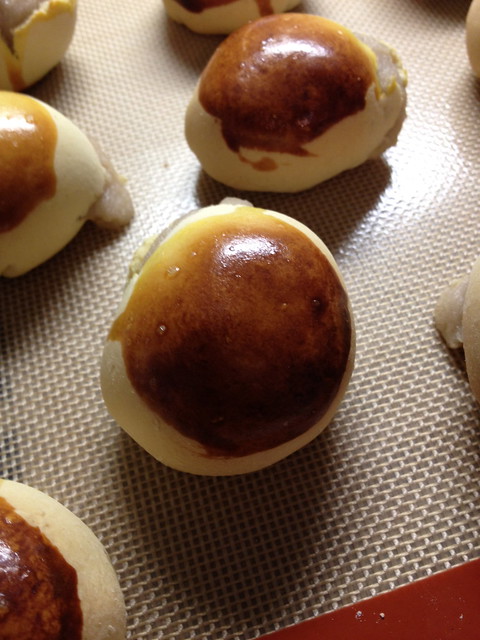
Sad faces of exploded manju.
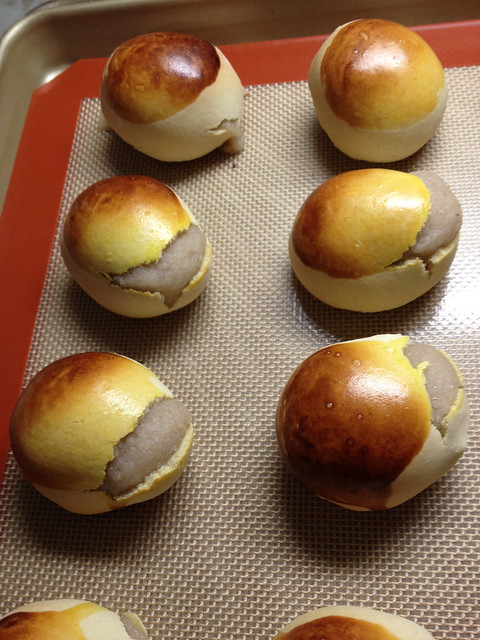
In some ways, these are a lot harder than making macarons. Ingredients are so simple, hence you need to know what you are doing This is going to be a long road, and I don't even know how I will "master" this. What's even more complicated is that there's not many "molds" or "pipings" to shape them. It's all about hand-crafted artistry, which is even harder...
As I mentioned earlier, I've organized a
wagashi (Japanese sweets) event for this Wednesday. It will be an extremely interesting program, with Japan's most knowledgeable expert in
wagashi, Keiko Nakayama speaking about its history, and how seasons are extremely important in the
wagashi world. The program will be moderated by NYT dining section reporter Julia Moskin, and will include a live demonstration of how to shape beautiful forms, like below by craftsmen of Toraya Confectionery in Tokyo.
 Sakura wagashi by Toraya Confectionary.
Sakura wagashi by Toraya Confectionary.
To make it even more fantastic, the program includes a tasting reception. Chefs will make all the
wagashi by hand. During the reception, chefs will hold demonstrations so that the audience can have very close-up look of their master hands at work.
Tickets are still available, and I am seriously recommending all of you to attend. It is an extremely rare opportunity to see these pieces of art being made in front of you.
 My most recent obsession is making anko (sweet bean paste) from scratch. As I wrote in my strawberry daifuku post a couple of weeks ago, using bean paste as dessert doesn't really exist in the west. But I am trying to find ways to mix this into my future baking. After all, it's gluten-free, and with all the gluten-free dessert shops popping up in the city, I want to find a brand new way of incorporating anko.
The other reason I am so obsessed with making wagashi (Japanese traditional sweets) is because I am organizing a program on the very subject matter, this Wednesday at Japan Society (NYC). More on that later.
So, the ingredients for anko is pretty simple.
For beans, I used northern white beans, since chef Nishihara from Kajitsu shojin restaurant (NYC) told me that after numerous kinds of beans he used to make his dessert courses, he found northern white is as close as the ones available in Japan.
Use about half a pound of white beans, wash and place the beans in a pot full of water.
My most recent obsession is making anko (sweet bean paste) from scratch. As I wrote in my strawberry daifuku post a couple of weeks ago, using bean paste as dessert doesn't really exist in the west. But I am trying to find ways to mix this into my future baking. After all, it's gluten-free, and with all the gluten-free dessert shops popping up in the city, I want to find a brand new way of incorporating anko.
The other reason I am so obsessed with making wagashi (Japanese traditional sweets) is because I am organizing a program on the very subject matter, this Wednesday at Japan Society (NYC). More on that later.
So, the ingredients for anko is pretty simple.
For beans, I used northern white beans, since chef Nishihara from Kajitsu shojin restaurant (NYC) told me that after numerous kinds of beans he used to make his dessert courses, he found northern white is as close as the ones available in Japan.
Use about half a pound of white beans, wash and place the beans in a pot full of water.
 Boil the beans, and add about half a teaspoon of baking soda. This makes it easier to separate the beans from the skin.
Boil the beans, and add about half a teaspoon of baking soda. This makes it easier to separate the beans from the skin.
 Here is the pot after I added baking soda.
Here is the pot after I added baking soda.
 Put the beans in a bowl and wash -- using your palms, to scrub the beans to separate beans from skins. If you do this diligently, it will make your life easier later. You'll see I didn't do too well with this batch.
Put the beans in a bowl and wash -- using your palms, to scrub the beans to separate beans from skins. If you do this diligently, it will make your life easier later. You'll see I didn't do too well with this batch.
 Bring the beans back to the pot, and cook them until they are super tender and can easily fall apart with your fingers.
Bring the beans back to the pot, and cook them until they are super tender and can easily fall apart with your fingers.
 Sieve the beans through, into a bowl. This is pretty tedious but it is very important in order to make smooth bean paste.
Sieve the beans through, into a bowl. This is pretty tedious but it is very important in order to make smooth bean paste.
 As I said, if you separated the skin earlier, you wouldn't get this much left at this point.
As I said, if you separated the skin earlier, you wouldn't get this much left at this point.
 Now you have smooth bean paste in water. Use a cheesecloth and try to squeeze all the water.
Now you have smooth bean paste in water. Use a cheesecloth and try to squeeze all the water.
 Once all the water is squeezed out, the bean paste will look like this:
Once all the water is squeezed out, the bean paste will look like this:
 Now mix it with sugar (I used about 200 grams), and cook it all down until the mixture is VERY stiff.
Now mix it with sugar (I used about 200 grams), and cook it all down until the mixture is VERY stiff.
 You are looking for the consistency of miso. You must keep stirring the paste or else it will burn easily. Also be careful not to splash, as the mixture is extremely hot.
You are looking for the consistency of miso. You must keep stirring the paste or else it will burn easily. Also be careful not to splash, as the mixture is extremely hot.
 I tried to make manju (wrapped in dough, then baked), but they all exploded.
I tried to make manju (wrapped in dough, then baked), but they all exploded.
 Sad faces of exploded manju.
Sad faces of exploded manju.
 In some ways, these are a lot harder than making macarons. Ingredients are so simple, hence you need to know what you are doing This is going to be a long road, and I don't even know how I will "master" this. What's even more complicated is that there's not many "molds" or "pipings" to shape them. It's all about hand-crafted artistry, which is even harder...
As I mentioned earlier, I've organized a wagashi (Japanese sweets) event for this Wednesday. It will be an extremely interesting program, with Japan's most knowledgeable expert in wagashi, Keiko Nakayama speaking about its history, and how seasons are extremely important in the wagashi world. The program will be moderated by NYT dining section reporter Julia Moskin, and will include a live demonstration of how to shape beautiful forms, like below by craftsmen of Toraya Confectionery in Tokyo.
In some ways, these are a lot harder than making macarons. Ingredients are so simple, hence you need to know what you are doing This is going to be a long road, and I don't even know how I will "master" this. What's even more complicated is that there's not many "molds" or "pipings" to shape them. It's all about hand-crafted artistry, which is even harder...
As I mentioned earlier, I've organized a wagashi (Japanese sweets) event for this Wednesday. It will be an extremely interesting program, with Japan's most knowledgeable expert in wagashi, Keiko Nakayama speaking about its history, and how seasons are extremely important in the wagashi world. The program will be moderated by NYT dining section reporter Julia Moskin, and will include a live demonstration of how to shape beautiful forms, like below by craftsmen of Toraya Confectionery in Tokyo.
 Sakura wagashi by Toraya Confectionary.
To make it even more fantastic, the program includes a tasting reception. Chefs will make all the wagashi by hand. During the reception, chefs will hold demonstrations so that the audience can have very close-up look of their master hands at work.
Tickets are still available, and I am seriously recommending all of you to attend. It is an extremely rare opportunity to see these pieces of art being made in front of you.
Sakura wagashi by Toraya Confectionary.
To make it even more fantastic, the program includes a tasting reception. Chefs will make all the wagashi by hand. During the reception, chefs will hold demonstrations so that the audience can have very close-up look of their master hands at work.
Tickets are still available, and I am seriously recommending all of you to attend. It is an extremely rare opportunity to see these pieces of art being made in front of you.




Comments (7)
I really wish I could go. I am a huge fan of wagashi — more than desserts of the western world mainly because I am not a big fan of dairy products. The process of making anko looks kind of fun, but it seems like it requires patience. I can’t wait to see pictures from the event. Go Yama! Oops, I mean, Moto!
You can still fly tomorrow, or Wed to make it to the program! I just met Toraya people, and you won’t believe how much anko they brought from Japan (vacuum packed of course)
Moto is right. We should go!!!
What give the brown color to the tops of the manju?
I want some manko no anko to make echina sweets with :-D
.. Or maybe I just wish I could attend your workshop! – I’m very attracted to the beautiful designs and colours. As a Westerner though, I often find these either odd tasting or just plain tasteless apart from discrete hints of sugar.
Could be fun to explore that grey area – japanese wagashi but with a Western flavour palette…? (= I want to read a Moto exploration of this)
“Manko no anko”… SUKEBE!
Yoko, the brown is egg yoke mixed with mirin, that gives a nice brown color. Anders, I can’t believe you said that. Can you REALLY picture anko and manko together, how GROSS!!
I am totally on the new flavor of anko, probably starts with vanilla. Let’s see.